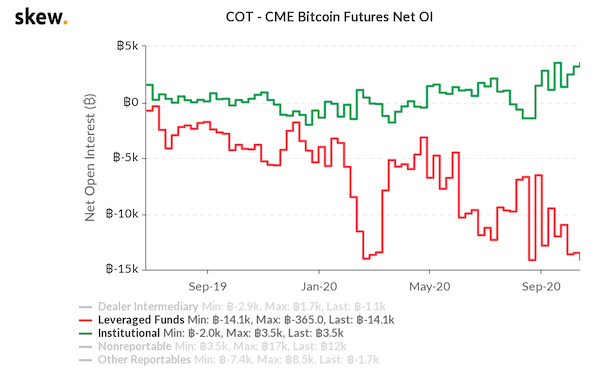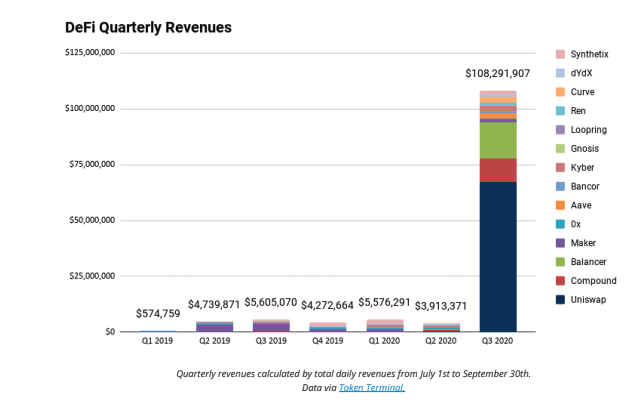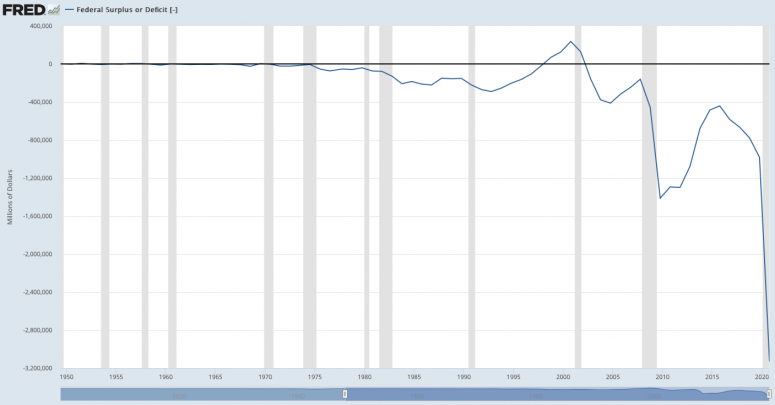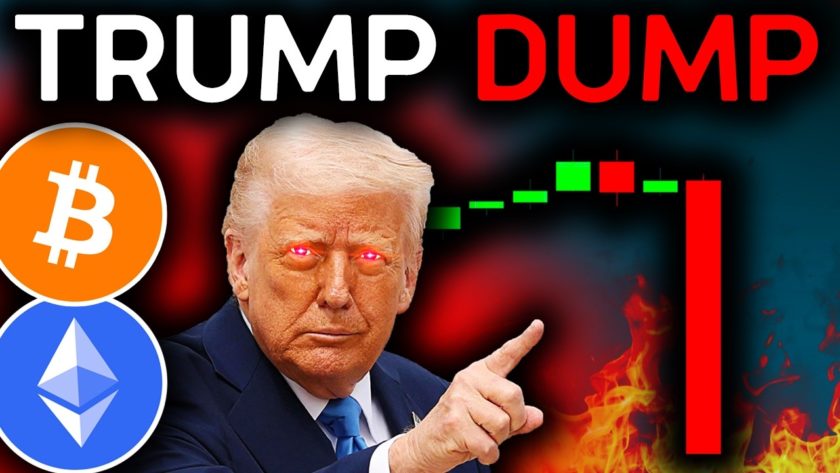Bitcoin was lower, tracking what appears to be a new range between roughly $11,200 and $11,700. It’s a step up from levels that prevailed over most of September, between $10,100 and $11,000.
“As the bulls push for a return to a $12,000 handle, resistance will be found just below, at $11,900,” Matt Blom, head of sales and trading for the cryptocurrency exchange owner Diginex, wrote in a daily newsletter.
In traditional markets, U.S. stock futures rose on fresh optimism that lawmakers might reach agreement on a new federal stimulus package. Gold strengthened.
Happening Monday: Federal Reserve Chair Jerome Powell is scheduled to appear at a panel sponsored by the International Monetary Fund on “the benefits and risks of cross-border” digital currencies.
Market Moves
Alert readers will recall that First Mover argued in this column last week that next month’s U.S. presidential elections may not matter too much for bitcoin’s price — because trillions of dollars of stimulus money are likely no matter who wins.
The calculus may also hold for whoever wins the upper chamber of the U.S. legislature, the Senate.
President Donald Trump is trailing in polls with just two weeks left until the Nov. 3 election day, so Wall Street analysts are starting to handicap the likely market reaction if the U.S. leader’s unpopularity translates to a takeover of the Senate by the opposition Democratic party.
The scenario “most likely to occur under a Democratic blue wave” is one of “overly easy” fiscal policy, eventually eliciting a response from the Fed, Deutsche Bank Chief International Strategist Alan Ruskin wrote last week in a report. A weaker U.S. dollar could result, Ruskin wrote, which could be good for bitcoin prices.
Even if Trump’s Republican party holds the Senate, and fiscal policy were “inappropriately too tight,” then the “burden of responsibility” would fall on the Fed to pursue additional money printing to keep markets from convulsing.
There’s little pressure at the moment to impose fiscal austerity. None other than the International Monetary Fund recommended last week that governments spend moreto fight the pandemic and bolster economies despite public debt reaching record levels.
Kristalina Georgieva, the IMF’s managing director, noted in published remarks that governments had allocated $12 trillion of extra aid this year and central banks had expanded their balance sheets by about $7.5 trillion. She said she expects debt levels in 2021 to rise to about 125% of gross domestic product in advance nations.
“The scale of government money committed is extraordinary,” Deutsche Bank strategist Jim Reid wrote in a separate note last week. “With Covid spreading and restrictions mounting, this won’t be the end of such fiscal support and will maybe herald a new era of fiscal largesse.”
With nearly $20 trillion pumped into the economy this year by governments and central banks, prices for bitcoin, seen by many investors as a potential hedge against inflation, have surged 60%. Bitcoin traders can be forgiven for betting that prices will rise further as trillions of dollars more in stimulus are deployed.
Bitcoin Watch

BTC’s recent resilience to several exchange-related issues seems to have given institutions the confidence to increase their bullish bets.
In the week ended Oct. 13, institutional investors increased long positions by over 9%, taking the tally of bullish bets to the record high of 3,500 contracts reached in mid-September.
The numbers were revealed by the Commitment of Traders (COT) report published by the U.S. Commodity Futures Trading Commission (CFTC) on Friday.
Bitcoin’s price rose to multi-week highs above $11,700 during the seven days to Oct. 12. Since then, however, the cryptocurrency has remained sidelined largely in the range of $11,200 to $11,700.
The on-chain activity has cooled due to the comatose price action. Bitcoin’s blockchain processed 231,437 transactions on Oct. 18, the lowest since May 24, according to data provided by the blockchain analytics firm Glassnode.
The combination of low volatility consolidation and pullback in transaction count often creates bullish conditions. That’s because, exchanges earn fewer BTC in fees with the slide in transaction count. As such, supply of BTC from exchanges drops, putting floor under prices.
That, coupled with record institutional bullish positioning suggests the path of least resistance is to the higher side. At press time, bitcoin is trading near $10,480.
Token Watch
OKB (OKB): OKEx exchange token loses 30% of market value since withdrawal suspension due to private keyholder being “out of touch.”
Filecoin (FIL): Wild first days of trading in decentralized data-storage company’s tokens end with price around $34 and market cap of $560M, according to CoinGecko, though variations are large across exchanges.
What’s Hot
Huobi contrasts security approach with rival OKEx’s, saying “multiple people and multiple backups ensure the availability of the private key.” (CoinDesk)
Sweden’s top central banker pushes hard for launch of “e-krona” digital currency in new economic note. (CoinDesk)
Diginex management’s projection of 5x Coinbase’s trading volume by 2023 “seems ambitious.” (CoinDesk Research)
Release of Filecoin’s FIL tokens signals growing market for “storage tokens.” (CoinMarketCap)
DeFi 3Q revenue dwarfed previous three-month periods by “a few orders or magnitude.” (Bankless):

Analogs
The latest on the economy and traditional finance
China growth hits 4.9% versus a year earlier, on track to be world’s only major economy to expand this year. (WSJ)
JPMorgan CEO Jamie Dimon says biggest U.S. bank has $300B of cash and doesn’t want to put money into investments returning 0.6% to “get a teeny bit more” of interest income. (Bloomberg)
Nancy Pelosi says she’s optimistic about legislation being passed before Nov. 3 presidential election. (CNBC)
After last week‘s IMF and World Bank meetings, columnist suggests that government stimulus funds should be used for investment in infrastructure, education and climate-change mitigation rather than “ill-targeted subsidies.” (South China Morning Post)
U.S. budget gap tripled to record $3.1T in fiscal 2020 ended Sept. 30 (WSJ):






